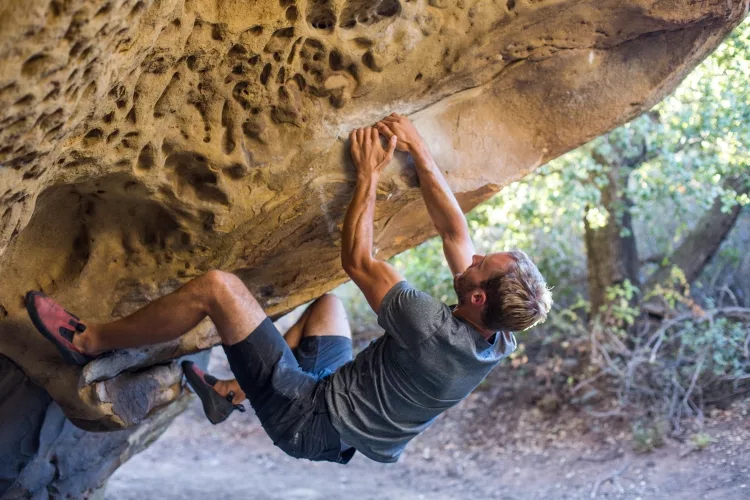It's a sufficiently typical inquiry: what is bouldering and why do it, rock climbers isn't that right? One specialized meaning of bouldering may be, and I'll allude to Wikipedia: "Bouldering is a style of rock climbing attempted without a rope and ordinarily constrained to short trips over an accident cushion (called a bouldering mat) so that a fall won't bring about genuine damage. It is normally polished on huge characteristic rocks or simulated stones in rec centers and open-air urban ranges." sufficiently simple, isn't that so? You might hear it portrayed as: "Low tallness, particularly specific, inconsequential danger climbing."
Contents
Which is impressively more straightforward? Bouldering is done inside, and, in addition, outside; as are most orders of moving (with the exception of perhaps ice climbing). Often, you'll hear the expression "bouldering issues" (in some cases called "courses", yet not as a rule). In a rec center environment, one is restricted to particular holds, which are no doubt showed by tape, or even the shade of the hold itself. Clearly, open air bouldering represents its own difficulties where holds may be shown just by past climbers chalk!

The inquiry, normally, may be "The reason bouldering"? Why not beat rope, trad, or ice moving?" For some climbers, these different styles are similarly convincing many climbers are partaking in these different styles also, and infrequently do you run over a climber who is solely devoted to some style. Habitually you'll run over a trad climber who rocks, or a boulder that climbs solidified waterfalls, and so on. For the purpose of this article, we'll concentrate on simply bouldering… Here is a short rundown of regular reasons.
Die hard thrill seekers don't get a mess from being suspended 20 feet off the ground. Consequently, bouldering-for some-doesn't as a matter, of course, offer the same bid as different styles. Regardless, bouldering offers its own one of a kind sort of surge. Keep in mind, however, bouldering still can be risky. In bouldering, (maybe more so than with its partners), numerous, if not the greater part of these dangers can be controlled.
Bouldering assembles climbing quality Period. How much more grounded or how rapidly that quality is produced, obviously, relies on upon a couple of things, for instance, assimilation framework, diet, and other physical variables. In any case, bouldering, by its exceptional nature, is redundant, building quality and stamina all the while. This is to say nothing of joining it with fringe workouts, (for example, weight preparing). Bouldering strengths various strong capacities, in a practically a boundless number of blends that are once in a while found in different types of activity.
one of a kind part of bouldering is the amount of speculation must be finished. It's far-fetched you'll meet a decent boulderer who doesn't conceive brand new ideas. Tying flawlessly into the physical way of moving, so as to climb well, you should consider unheard of options! It's difficult to take care of an issue by killing your mind, looking about aimlessly for a supernatural occurrence hold or the right point and trusting that physical laws permit a special case! Each climber not just needs to thoroughly consider different positions to tackle an issue, additionally should think unmistakably, rapidly, and conclusively.

History:
Rock climbing initially rose as a game in the mid-1800s. Early records portray climbers taking part in what is presently alluded to as bouldering, not as a different order, but rather as a type of preparing for bigger risings. In the mid-twentieth century, the Fontainebleau territory of France built up itself as a conspicuous climbing range, where a percentage of the initially committed bleausards (or "boulderers") rose. The specific rock climbing shoe was developed by one such competitor, Pierre Allain.
In the 1960s, the game was pushed forward by American mathematician John Gill, who contributed a few critical developments. Gill's past athletic interest was aerobatic, a game which had a set-up size of trouble for specific developments and body positions. He connected this thought to bouldering, which moved the center from coming to a summit to exploring a particular arrangement of holds. Gill added to a shut finished rating framework: B1 issues were as troublesome as the most difficult reserved courses of the time, B2 issues were more troublesome, and B3 issues were those that had just been finished once.
Gill presented chalk as a system for keeping the climber's hands dry. He likewise underlined the significance of quality preparing to supplement specialized skill. Neither of these practices had been well known among climbers, yet as Gill's capacity level and impact developed, his thoughts turned into the standard.
Two imperative preparing apparatuses rose in the 1980s: Bouldering mats and manufactured climbing dividers. The previous additionally alluded to as "accident cushions", kept wounds from falling, and empowered boulderers to move in ranges that would have been excessively perilous, making it impossible to endeavor something else. Indoor climbing dividers spread the game to regions without outside climbing and permitted genuine climbers to prepare year-round paying little heed to climate conditions.
As the game developed in notoriety, new bouldering ranges were produced all through Europe and the United States, and more competitors started taking an interest in bouldering rivalries. The perceivably of the game significantly expanded in the mid-2000s, as YouTube recordings and climbing web journals offered boulderers around the globe to rapidly learn strategies, some assistance with finding difficult issues and declare recently finished undertakings.
In mid-2010, two American climbers asserted first risings on rock issues that have come to be viewed as the most troublesome on the planet: The Game close Boulder, Colorado, built up by Daniel Woods; and Lucid Dreaming close Bishop, California, set up by Paul Robinson. The next year, kindred American Carlo Traverse asserted the second rising of The Game and in January 2014, American Daniel Woods finished the second rising of "Clear Dreaming. "In 2011, Czech climber Adam Ondra guaranteed the second rising of Gioia, initially settled three years before by Italian boulderer Christian Core, and proposed that it was among the world's most testing stone issues.

Bouldering Grades
Bouldering, however utilizing a significant part of the same abilities and procedures as climbing, is genuinely its very own game. Courses are normally outlined low to the ground and as opposed to utilizing ropes for security; climbers are spotted by an accomplice. Climbers move over huge stones that are frequently found at the base of precipices. Initially moving over these rocks gave a method for warming up for a more drawn out trip; however it has subsequent to formed into a game in its own particular right. Bouldering courses or issues, as they are frequently called, are evaluated by levels, and throughout the years, a few reviewing frameworks have risen.
This was the first evaluating framework produced for bouldering. Grades in this scale range structure 0-16, with 16 being the most elevated or most troublesome quality. In spite of the fact that an evaluation of V0 is viewed as a simple bouldering course, remember that it would, in any case, be viewed as a decent test for the tenderfoot boulderer. Indoor bouldering has begun to review issues also and have incorporated an evaluation of V-B which speaks to a course that is suitable for a learner. V Grading was created in, and stays most generally being used in the United States.
This technique for reviewing bouldering issues was produced by Allan Williams trying to incorporate evaluations for less demanding issues that were excluded in the V Grade System. On the other hand, as the V Grading framework changed to incorporate lower evaluation issues, the Peak System has lost support with numerous climbers. When you see B-Graded issues on a change outline, it is really this Peak reviewing framework that you are seeing. Discovered frequently in North America, most climbers discovered the philosophy utilized as a part of this framework to be conflicting and befuddling.
Created in France, the Font or Fontainebleau Grading System is frequently found in European courses. Grades range from 1a to 8c, with the lower numbers speaking to the less demanding issues. This arrangement of evaluating was initially created to incorporate the sandstone rocks of France and thus, numerous climbers contend that it is not a reviewing framework important to general bouldering.
Thus, numerous have discovered the evaluations confounding, finding that what ought to have been a genuinely simple issue judging by its Font Grade, swung out to really be very troublesome. Thusly, this framework, however still broadly utilized as a part of Europe, has not gathered the worldwide acknowledgment that the V Grading framework has found.
While it creates the impression that some discussion stays over which framework is best and most precise for evaluating bouldering issues, it is at last up to the individual climber to be taught and educated as to the trouble level of any bouldering issue being considered.
 |
 |
 |
 |
Recent Post
Try the new FREE GiveAways Page
Something wrong ? Try refresh this page
Whitelist, remove adblock to see all the secrets. Once done, hit refresh button below.
 |
 |
 |
 |